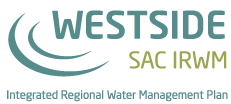
Water resources management in California is complicated, especially since watersheds, floodplains, and habitat areas do not conform to city, county, or agency boundaries. Regional partnerships are needed to identify and take action on shared challenges and opportunities related to water supply reliability, water quality, flood management, and ecosystem health, among others. Working together and leveraging resources will lead to more effective, affordable, and sustainable water resources management at local and regional levels.
With this in mind, a group of public agencies spanning five counties – Yolo, Colusa, Lake, Solano, and Napa – have partnered to identify and address regional water resources opportunities and challenges for the areas within the Cache Creek and Putah Creek watersheds [Map]. Some of the key water sources within the planning area include Clear Lake, Lake Berryessa, Indian Valley Reservoir, Putah Creek, and Cache Creek.
With input from their communities, the partner agencies developed an Integrated Regional Water Management (IRWM) Plan that describes and addresses the following:
- Water supply reliability
- Water conservation
- Water quality improvement
- Storm water management
- Flood management
- Invasive species abatement
- Mercury contamination cleanup
- Wetlands enhancements and protections
- Environmental and habitat improvements and protections
Collectively, the planning area includes 9 cities and more than 70 special service districts, and is subdivided into three areas for planning purposes: Upper Cache Creek; Lower Putah Creek; and, Lower Valley Floor.
The IRWM Plan supports local and regional efforts to secure grant funding for projects identified as part of the planning process. The development of the IRWM Plan was funded in large part by a $1 million grant from the California Department of Water Resources Proposition 84 funds.

Lake Solano
The Planning Process
Encouraging participation and input from residents and other stakeholders has been a key goal of the IRWM Plan development process. Other goals included:
- Fostering collaboration among agencies and stakeholders that leads to effective strategies to address challenges, take advantage of opportunities and strengthen relationships between affected parties.
- Maximizing the use of existing local data and water resources plans.
- Developing a better understanding of the region’s current and future water resource challenges, needs, and opportunities.
- Encouraging broad support of the development process and the final plan content.
- Providing a useful foundation for ongoing regional water resources efforts and supporting meaningful integration with and enhancement of adjacent IRWM Plans and other sub-regional planning efforts.
- Complying with applicable state requirements (Proposition 84) and the legislative intent of the California Water Code. Additionally, the plan will be consistent with the statewide California Water Plan.
- Creating a living document under a governance structure that supports periodic updates in response to changing conditions.
- Using compelling information that supports future efforts to secure available grant funding.
Projects identified in the Westside Sac IRWM Plan are eligible for funding from the California Department of Water Resources. The Plan was found sufficient by the DWR in 2019. The Plan was developed using an interactive process to address the following topics:
- Topic 1: Team Charter
- Topic 2: Plan Development Process
- Topic 3: Plan Scope
- Topic 4: Current Conditions
- Topic 5: Future Conditions
- Topic 6: Challenges and Opportunities
- Topic 7: Potential Projects
- Topic 8: Integration
- Topic 9: Benefits and Impacts
- Topic 10: Project Selection and Priority
- Topic 11: Plan Recommendations
- Topic 12: Governance
- Topic 13: Finance
- Topic 14: Plan Performance and Monitoring
Information related to each of these topics was presented and discussed through an interactive process initiated during public meetings. Draft plan content was prepared based on the discussion of each topic and then provided for public review and comment. The draft content was revised as needed based on comments offered and then made available again for review and comment until the content is broadly acceptable. At the end of the planning process, the agreed upon content was combined into the IRWM Plan for final public review and member agency adoption.
An illustration of this interactive process, using Topic 6 as an example:
Topic 6:
- Challenges and Opportunities introduced and discussed at one of three public meetings
- Consultant team develops draft section on Topic 6, based on public input
- Draft Topic 6 section put out for public review and comment
- Draft Topic 6 section revised based on comments
- Revised Draft circulated for public review and comment
- Draft Topic 6 section revised based on comments
- Revised draft circulated for public review
- Draft Topic 6 section finalized

How to be involved
Participate in meetings
Review draft documents
If you have questions or comments about our process please contact us.
Stay up to date on meetings & events with our Westside eNews.
© 2024 Westside Sac IRWM
Website design by Pat Davis Design Group, Inc.
